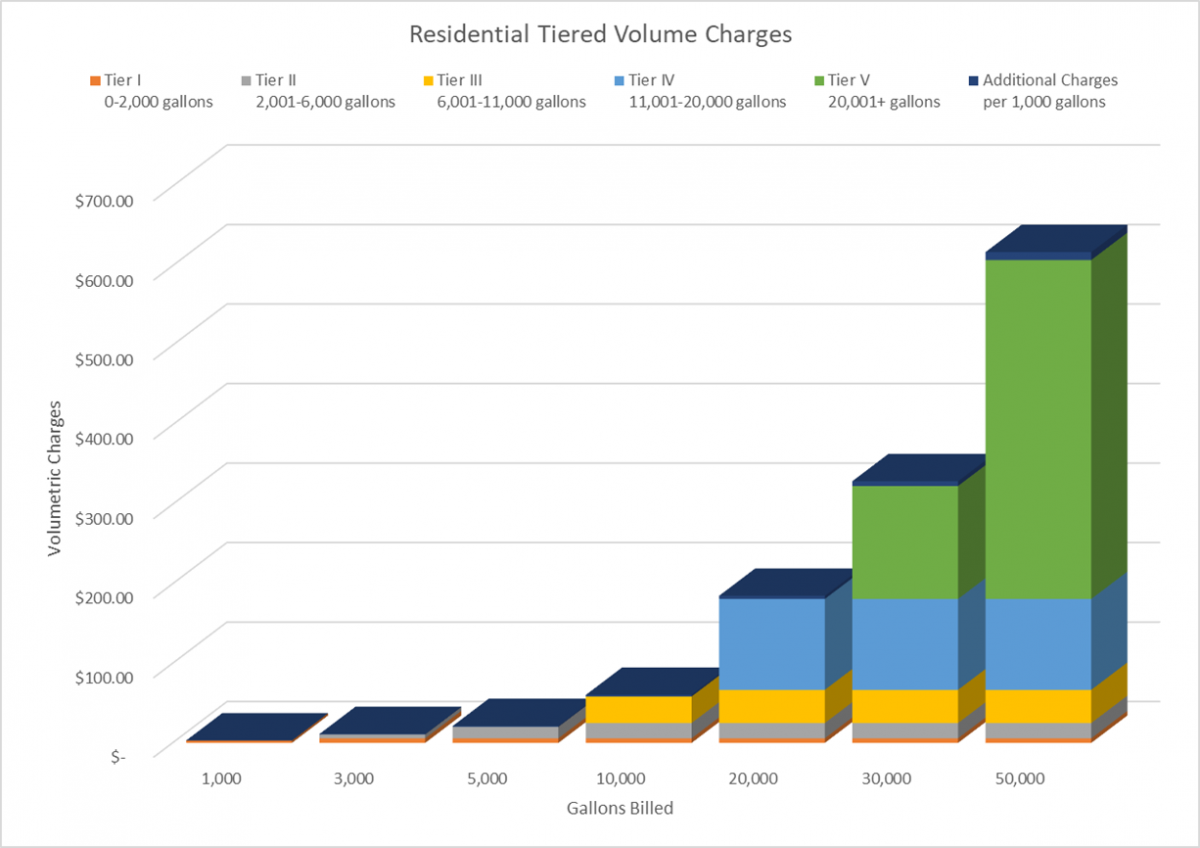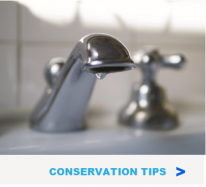We all know that filling or topping off a swimming pool can lead to unexpectedly high water bill at the end of the month. But did you know that there are many other less obvious leaky culprits inside and outside your home which can also contribute to unexpectedly high water bills?
- Leaky toilets are notorious water wasters than can increase your water bill if left unchecked. Toilet leaks can waste as much as 200 gallons of water a day, or more than 5,500 a month!
- Irrigation systems can also be sneaky water wasters which can go undetected. A tiny break (measuring about the thickness of a dime) in your irrigation lines can waste a whopping 6,300 gallons of water per month!
Leaks and Drips Add Up Over Time
Don't let a running leak or drip bump you into a more costly pricing tier. The more water you use or waste, the more it is going to cost you per gallon as shown in the graph below.

Residential Tiered Volume Charges - Austin Water uses a tiered pricing system based on the volume of water you used.
So how does a small leak or drip cause such a large increase on your water bill? Take the leaky toilet and faulty irrigation system mentioned above as an example. If left unchecked, you could be on the hook for thousands of gallons of wasted water which you probably didn't even know was going down the drain (or storm drain). As the volume of water used increases, so does the cost per gallon, as illustrated in the Residential Tiered Volume Charges graph above.
Leaks Can Run, but They Can't Hide
Are you ready to chase down leaks? Here are a few tips to help you hunt down the drips.
Common types of leaks found in the home are worn toilet flappers, dripping faucets, and other leaking valves. These types of leaks are often easy to fix, requiring only a few tools and hardware that can pay for themselves in water savings.
To check for leaks in your home, you first need to determine whether you're wasting water and then identify the source of the leak. Here are some tips for finding leaks:
- Take a look at your water usage during a colder month, such as January or February. If a family of four exceeds 12,000 gallons per month, there are serious leaks.
- Check your water meter before and after a two-hour period when no water is being used. If the meter changes at all, you probably have a leak.
- Identify toilet leaks by placing a drop of food coloring in the toilet tank. If any color shows up in the bowl after 10 minutes, you have a leak. (Be sure to flush immediately after the experiment to avoid staining the tank.)
- Examine faucet gaskets and pipe fittings for any water on the outside of the pipe to check for surface leaks.
Water Saving Tips and more
Additional water saving tips can be found on the Water Saving Tips page.




